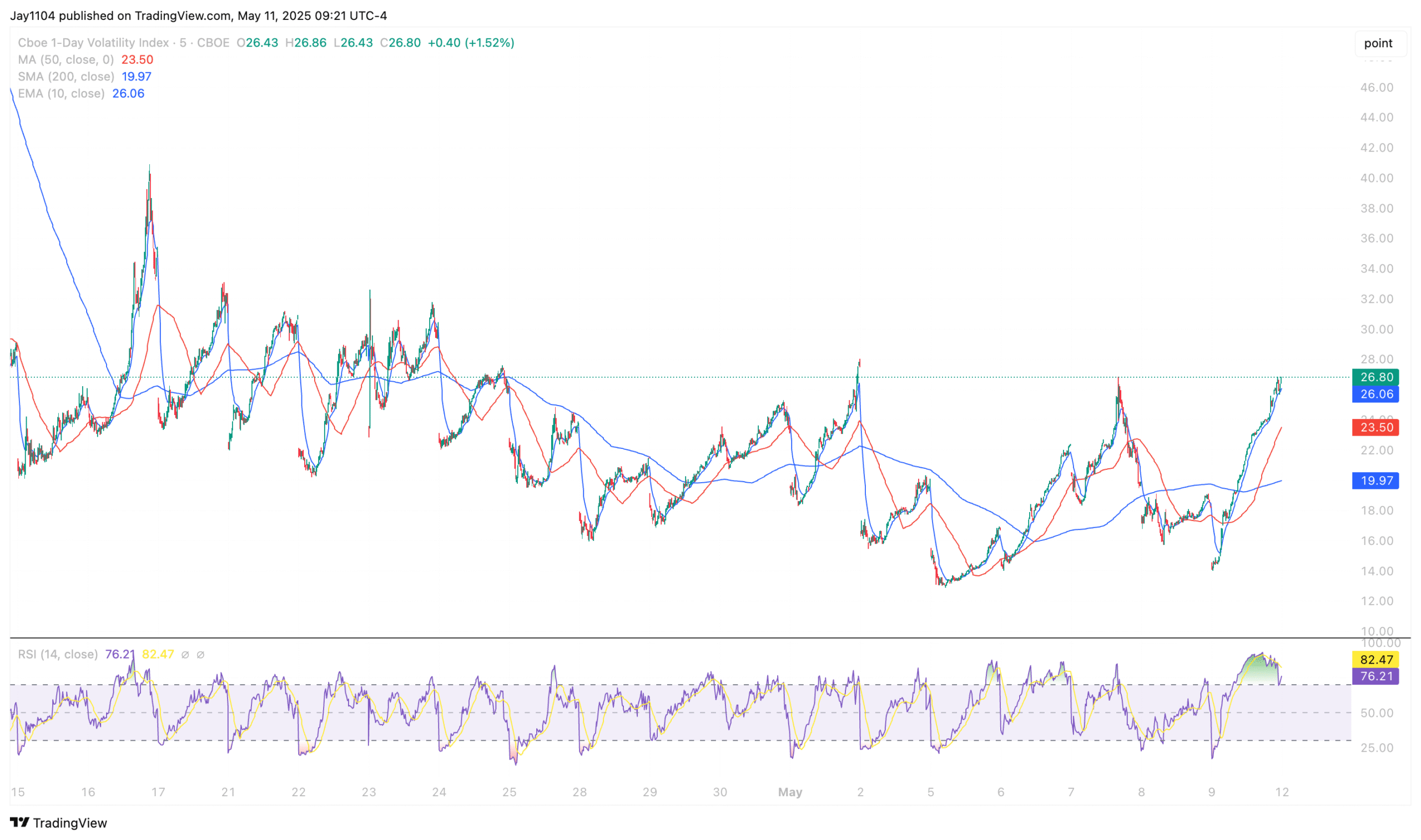ION expands ETF trading capabilities with Tradeweb integration
Stocks have consolidated over the past week and are currently positioned at a critical technical crossroads. The S&P 500 is wedged between the 61.8% Fibonacci retracement level and its 200-day moving average. This intersection around the July 2024 high near 5,710 previously served as substantial resistance in mid-March, emphasizing the significance of this technical juncture.
Additionally, a rising wedge formation on the S&P 500 chart suggests a potential short-term upside move to approximately 5,750—just enough to touch the 200-day moving average—before the pattern resolves lower.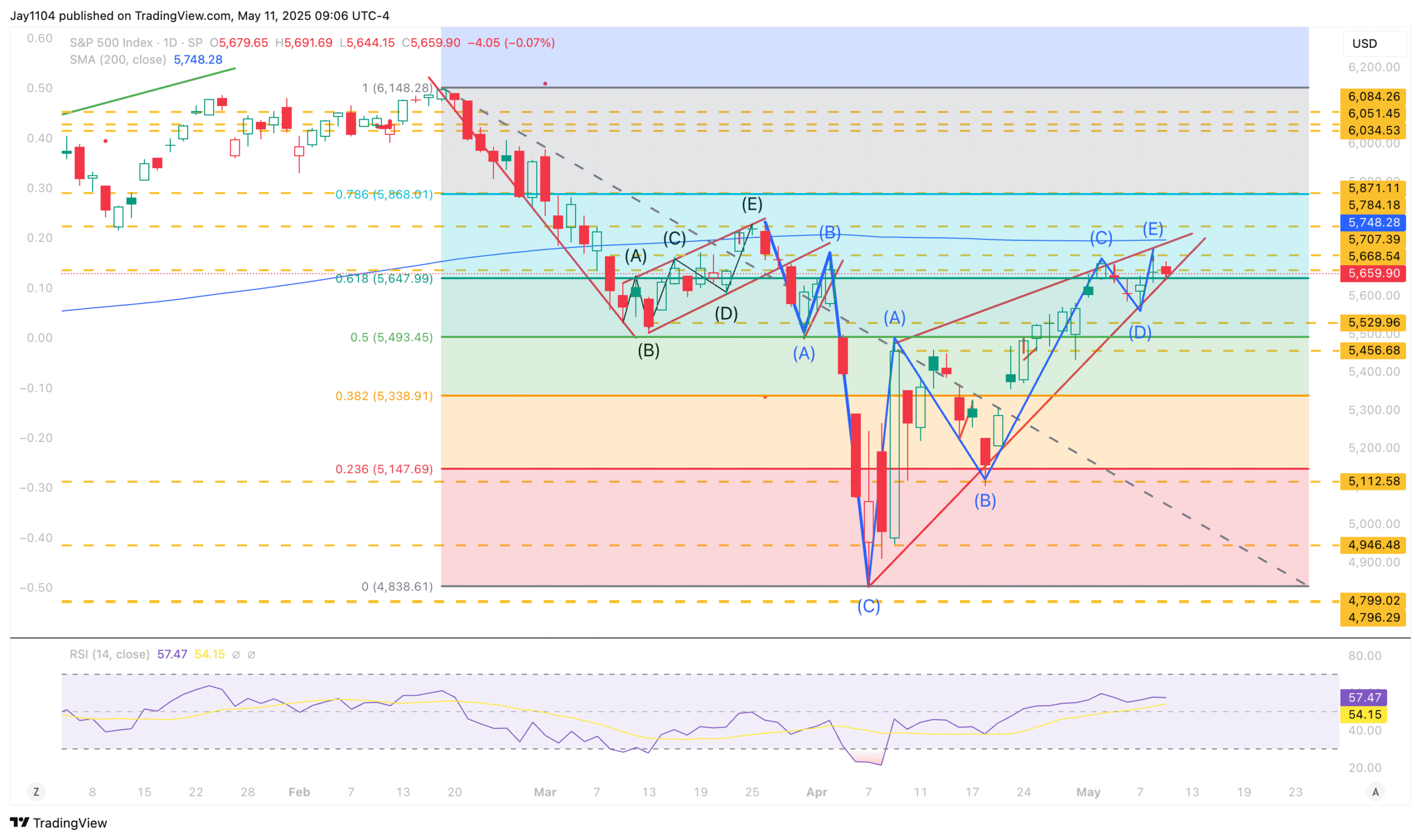
The NASDAQ exhibits a parallel scenario, featuring a clear rising wedge pattern centered around the pivotal 20,000 level, also intersecting with the 61.8% retracement and its 200-day moving average. Technical analysis indicates that a reversal lower is increasingly probable, initially targeting a retracement down toward the 17,900 area.
Historically, such rising wedge patterns often result in moves that undercut previous lows, suggesting the potential for a deeper corrective scenario.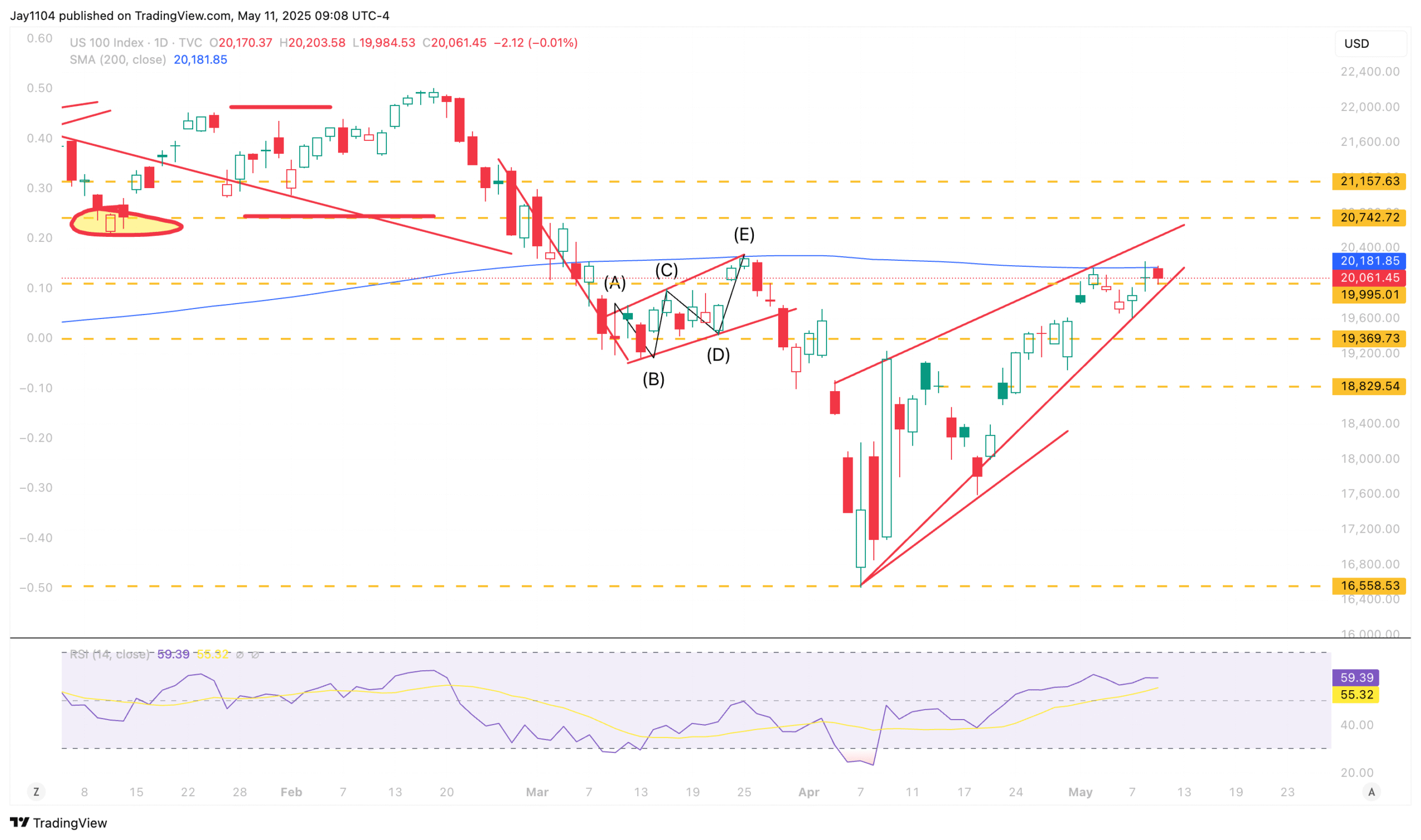
Notably, the BTIC S&P 500 Total (EPA:TTEF) Return futures contracts remain unconfirmed. Despite minor gains at the end of last week, these futures remain at historically low levels, signaling skepticism about the durability of the current market advance and raising concerns regarding the potential divergence between futures positioning and underlying stock prices.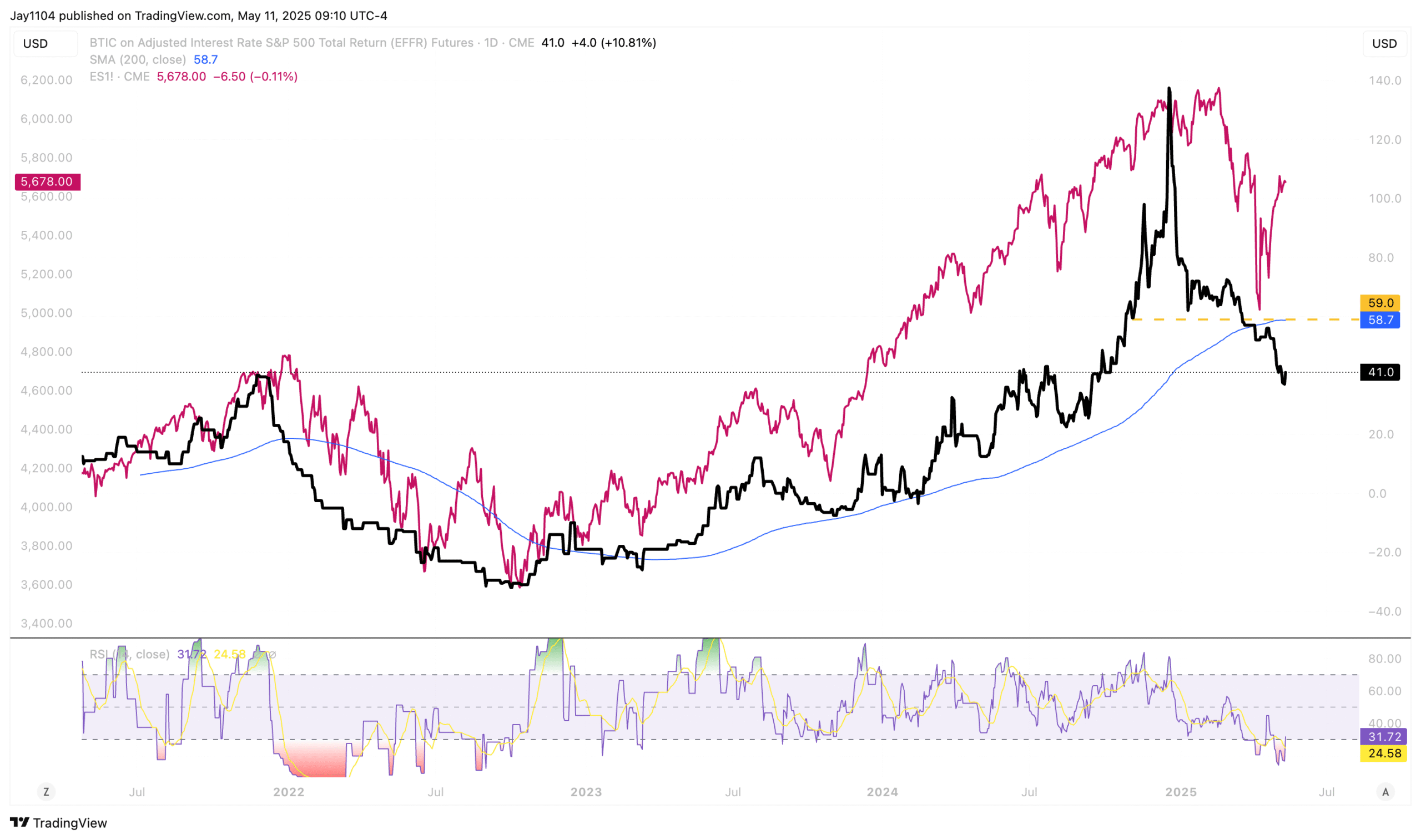
From a macroeconomic perspective, attention will be heavily focused on inflation indicators this week, including CPI, PPI, and import/export prices. Elevated prices-paid indexes, consistently highlighted in recent regional Fed and ISM PMI reports, have historically served as leading indicators of rising import prices.
The current trajectory of these indicators strongly implies a significant uptick in import prices, potentially signaling accelerating inflationary pressures in the coming months and the latter half of the year.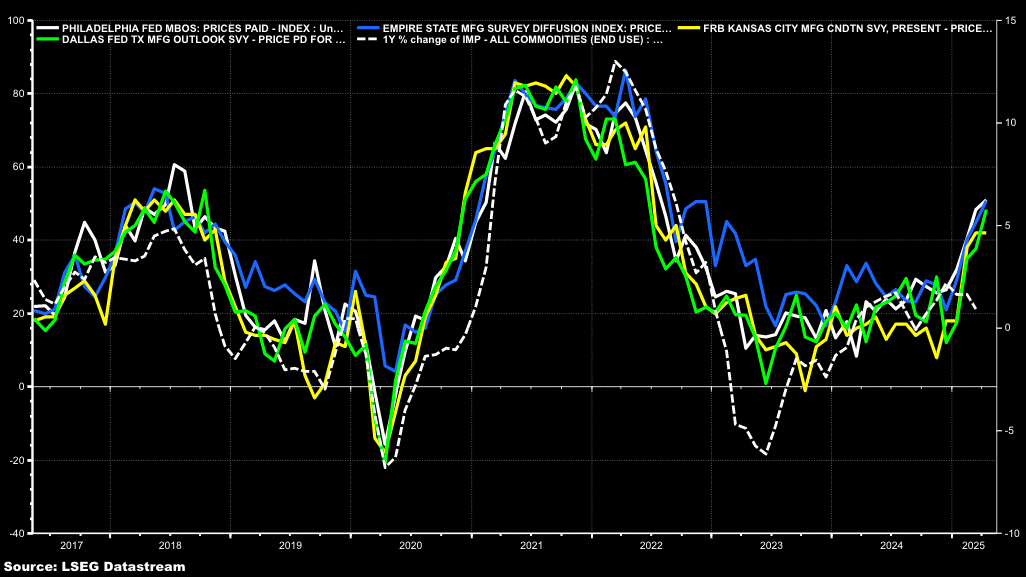
This anticipated inflation backdrop reinforces expectations for rising Treasury yields. The 10-year yield is technically positioned near 4.60% and appears poised to advance towards the 4.70% range, supported by the development of a bullish flag pattern.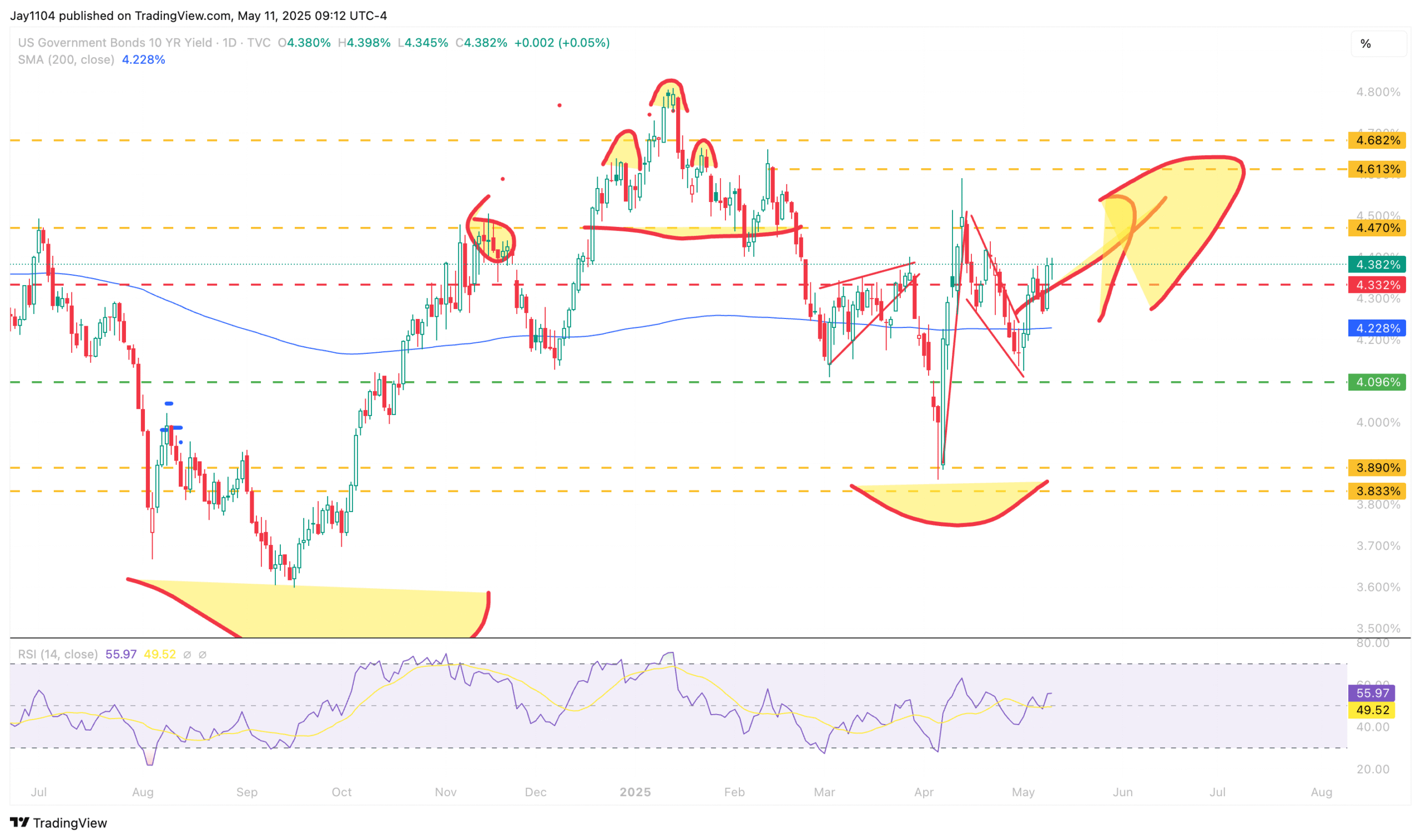
Similarly, the 30-year yield continues to test critical resistance around 4.80%, with technical structures pointing to a potential breakout above 5.00%, possibly reaching as high as 5.16%.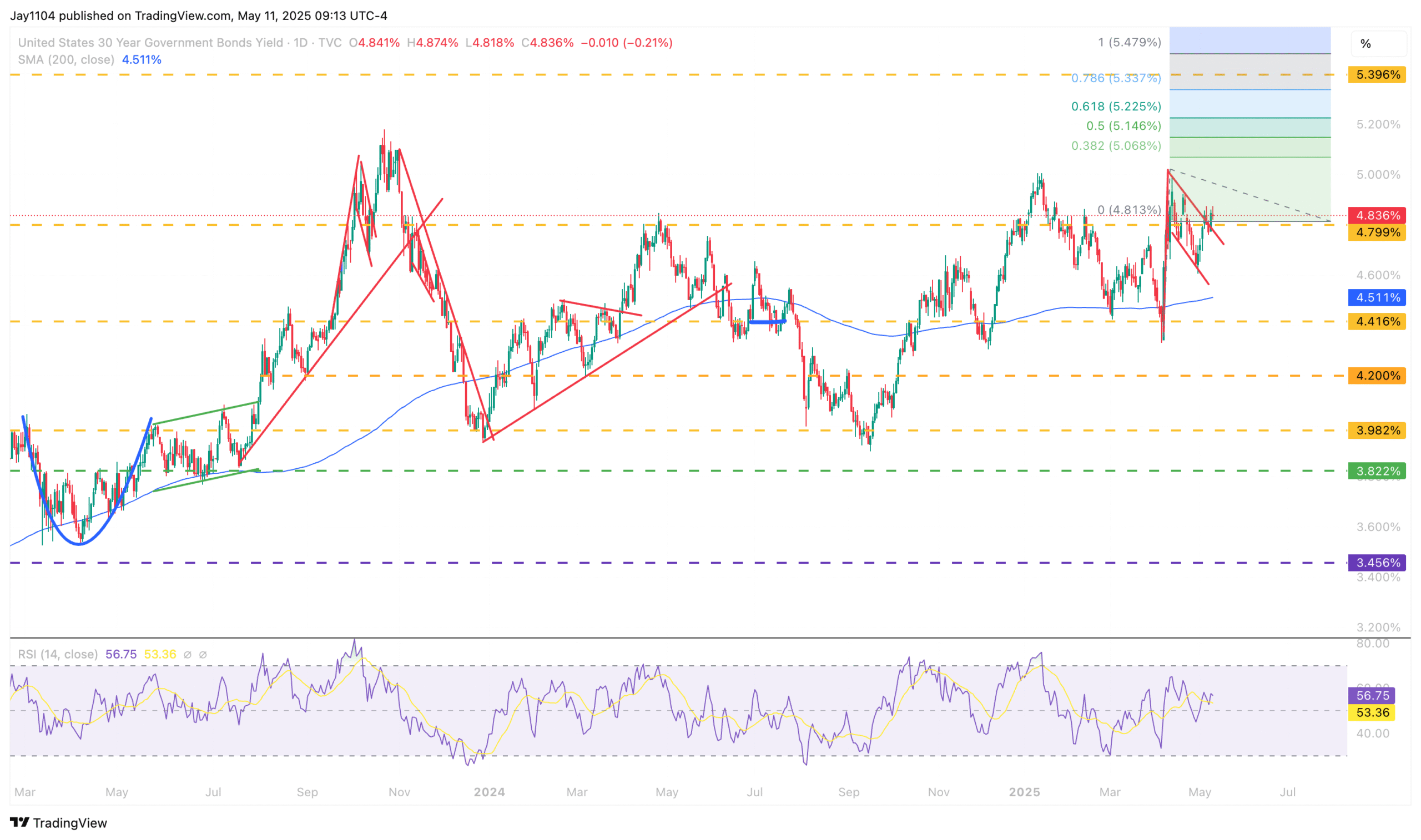
Such movements would substantially steepen yield curves, notably impacting the 10-year minus 2-year and the 30-year minus 3-month spreads, both poised to widen materially.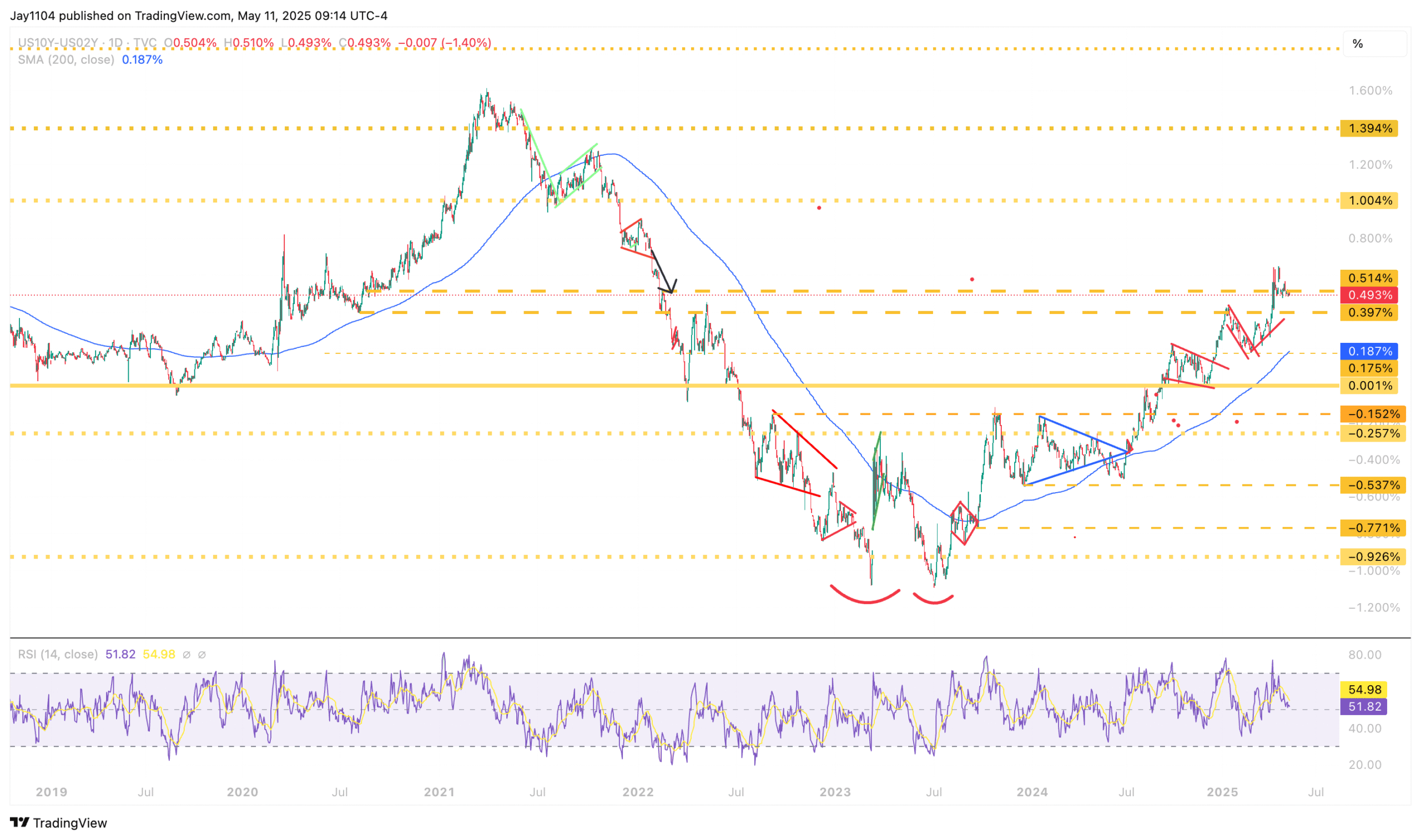
Turning to currencies, the dollar shows a bearish flag formation, suggesting further weakness. Meanwhile, the EUR/USD is holding critical support around 1.12; a breach here could see a swift move toward the 1.09 area. Conversely, sustained support could trigger a move higher.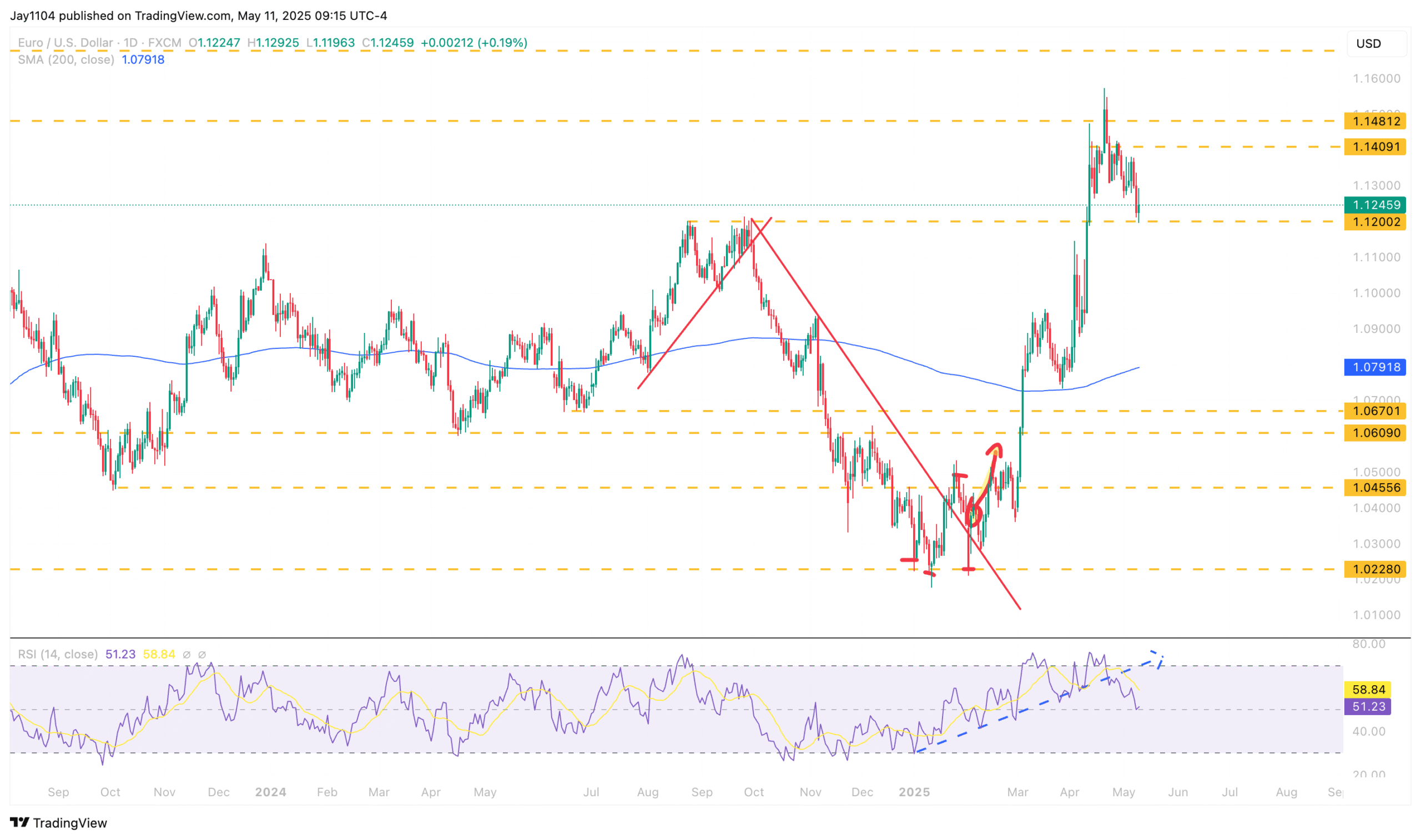
The Japanese yen is encountering resistance at its 50-day moving average near the 146 level, marking a pivotal area for currency markets.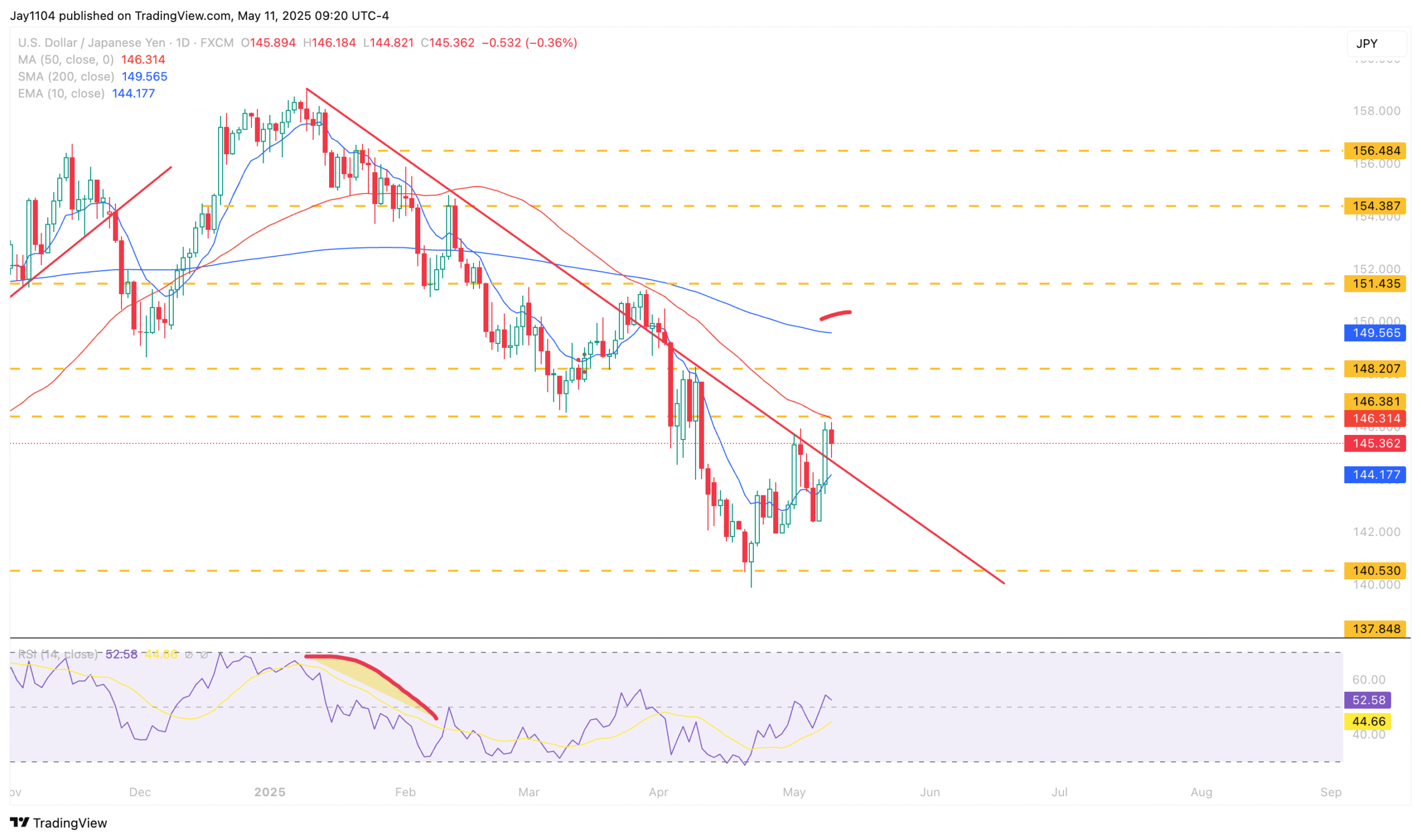
Finally, volatility in Asian currencies, particularly the Taiwan dollar amid ongoing U.S.-China trade talks, warrants close monitoring. After substantial strengthening last week, recent volatility signals uncertainty and potential further shifts in market sentiment.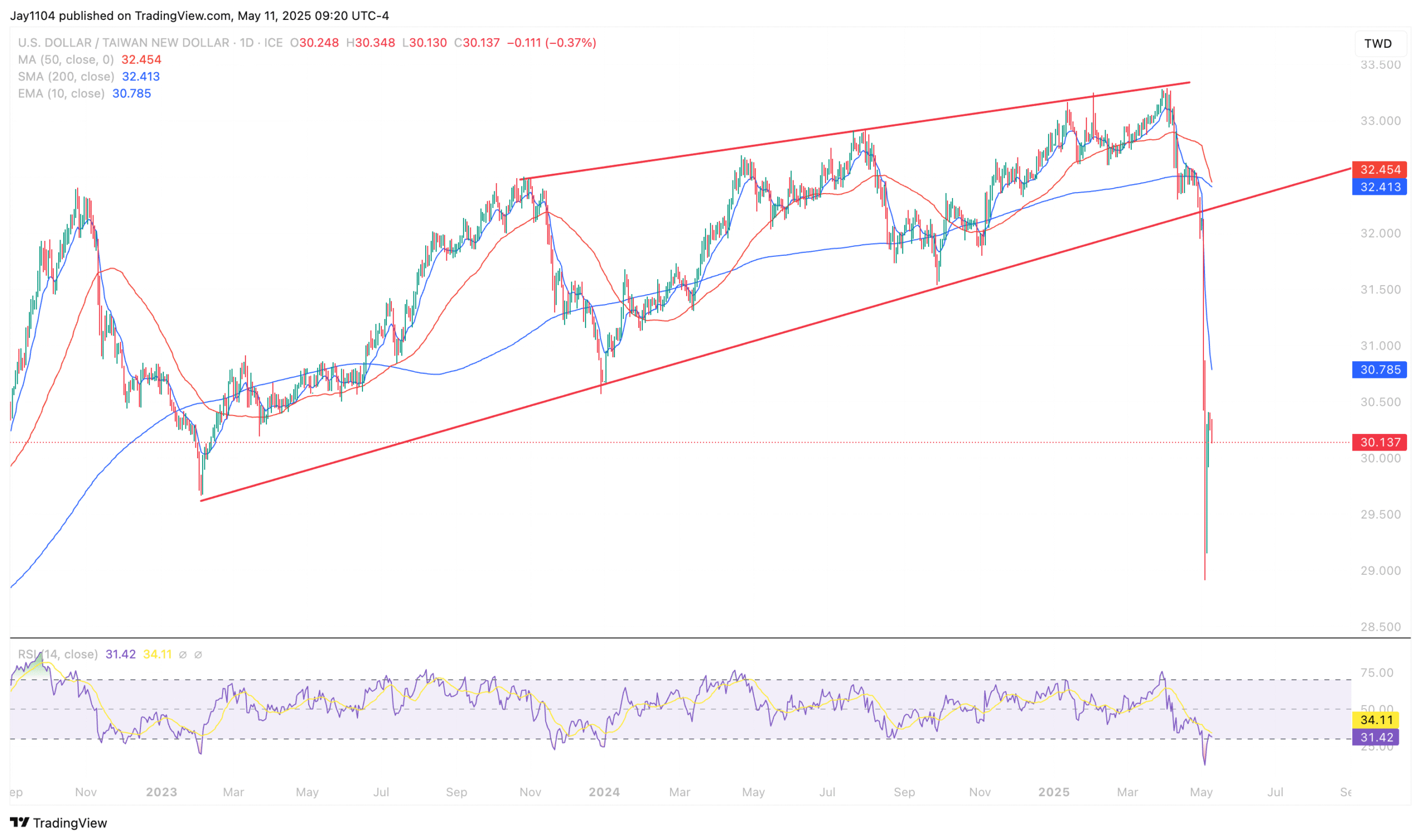
The spike in one-day VIX implied volatility on Friday suggests an early-week bounce may be likely, driven by volatility reset dynamics. However, given the technical and fundamental backdrop, any initial gains could quickly fade, underscoring the importance of caution as markets navigate this significant technical and macroeconomic inflection point.